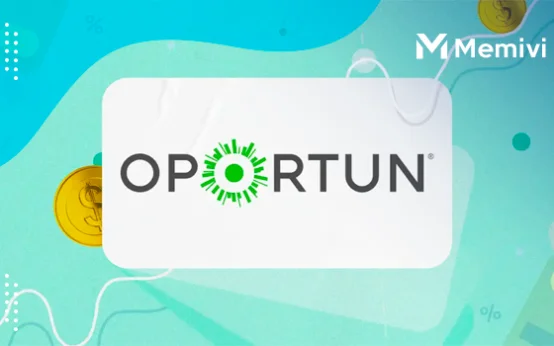
The HSBC Personal Loan was designed to provide borrowers with a simple, predictable borrowing option—ideal for managing debt, funding important life events, or covering unexpected expenses. Although HSBC has since paused new personal loan applications in the U.S., many existing borrowers continue to benefit from its flexible features and user-friendly servicing tools.
This page offers a straightforward guide to what the HSBC Personal Loan offered, what borrowers need to know if they currently hold one, and suggestions for those looking for similar loan options today. We’ll help you understand key details, essential tips for managing your existing loan, and where to look if you’re seeking a new personal loan now.
Why Choose the HSBC Personal Loan?
- Competitive fixed APRs with predictable payments over the life of the loan.
- Offered loan amounts up to $30,000 with no collateral required.
- Straightforward terms and no prepayment penalties, giving borrowers full repayment flexibility.
- Online access to your loan account with payment scheduling through HSBC’s EZ-Pay system.
- Designed for various purposes: debt consolidation, home repairs, large purchases, and more.
- Fast application process when active, with funds often disbursed in just a few days.
- Supported by HSBC’s global banking reputation for reliability and security.
Why Consider a Personal Loan?
- Pay off credit cards or high-interest debts with one fixed-rate monthly payment.
- Fund unexpected expenses like medical bills or car repairs.
- Improve budgeting with a clear payoff date and consistent loan terms.
- Handle major life expenses such as moving, weddings, or family needs.
- Avoid long-term interest charges from revolving credit.
- Gain peace of mind with structured, closed-end financing.
- May improve credit over time with regular, on-time payments.
What to Know Before You Apply
Note: HSBC is not currently accepting new personal loan applications in the U.S. The list below outlines what applicants previously needed to consider.
- A good credit score was required for approval and better interest rates.
- Loan terms typically ranged from 2 to 5 years with fixed APRs.
- Borrowers could not exceed a maximum debt-to-income ratio.
- Proof of income, identity, and address was required for approval.
- An HSBC checking account helped streamline application and funding.
- Origination fees were not charged, helping reduce the cost of borrowing.
- Prequalification tools were not available—applications required a hard credit pull.
How to Apply for a Personal Loan
While you can no longer apply for a new HSBC Personal Loan in the U.S., here’s how the process worked—and how other lenders typically structure similar steps today:
- Choose a lender (HSBC was a strong option; now consider banks like Citi, Wells Fargo, or online lenders).
- Check eligibility requirements and your credit score.
- Complete a secure application online or in person.
- Provide personal info: income, employment, and identity verification.
- Wait for loan review and approval decision (usually within 1–3 days).
- Review the loan offer and accept the terms.
- Receive your funds directly into your bank account.
- Set up autopay to ensure on-time monthly payments and simplify repayment.
When you click, you will be redirected


 Oportun Personal Loans Review <p class='sec-title' style='line-height: normal; font-weight: normal;font-size: 16px !important; text-align: left;margin-top: 8px;margin-bottom: 0px !important;'> If you’re looking for an accessible, transparent loan solution and traditional avenues aren’t an option, Oportun can be a trustworthy choice. </p>
Oportun Personal Loans Review <p class='sec-title' style='line-height: normal; font-weight: normal;font-size: 16px !important; text-align: left;margin-top: 8px;margin-bottom: 0px !important;'> If you’re looking for an accessible, transparent loan solution and traditional avenues aren’t an option, Oportun can be a trustworthy choice. </p>  PenFed Credit Union Personal Loans Review <p class='sec-title' style='line-height: normal; font-weight: normal;font-size: 16px !important; text-align: left;margin-top: 8px;margin-bottom: 0px !important;'> PenFed personal loans offer excellent value: low fixed rates, no hidden fees, fast funding, and an easy online experience. </p>
PenFed Credit Union Personal Loans Review <p class='sec-title' style='line-height: normal; font-weight: normal;font-size: 16px !important; text-align: left;margin-top: 8px;margin-bottom: 0px !important;'> PenFed personal loans offer excellent value: low fixed rates, no hidden fees, fast funding, and an easy online experience. </p>  M&T Bank Personal Loans Review <p class='sec-title' style='line-height: normal; font-weight: normal;font-size: 16px !important; text-align: left;margin-top: 8px;margin-bottom: 0px !important;'> M&T Bank Personal Loans combine flexibility, clarity, and reliability for borrowers who want a loan that fits their needs. </p>
M&T Bank Personal Loans Review <p class='sec-title' style='line-height: normal; font-weight: normal;font-size: 16px !important; text-align: left;margin-top: 8px;margin-bottom: 0px !important;'> M&T Bank Personal Loans combine flexibility, clarity, and reliability for borrowers who want a loan that fits their needs. </p>